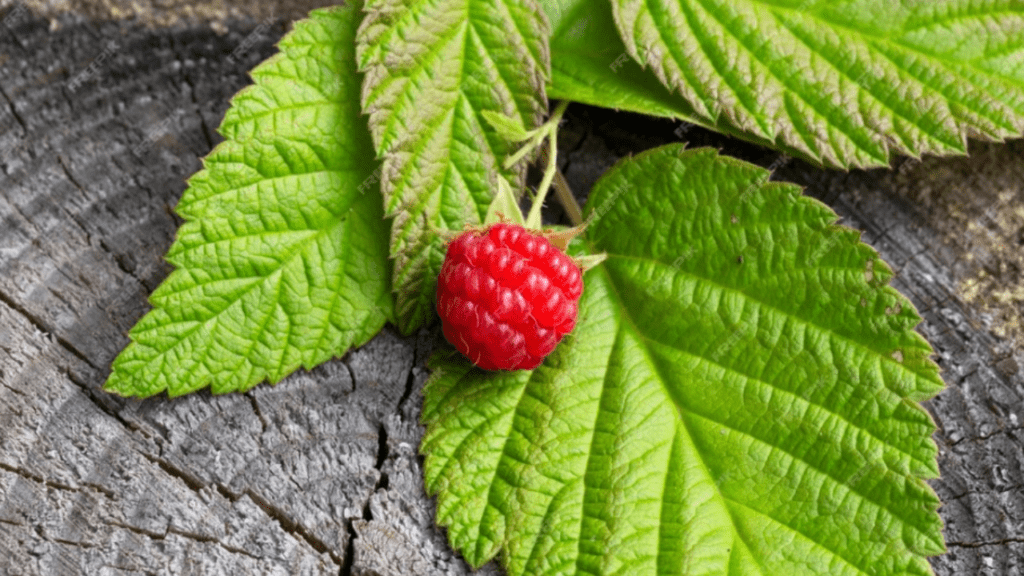
Strawberry Leaves Edible: Health Benefits and Culinary Uses
Strawberry leaves edible benefits are often overlooked, yet these leaves hold surprising nutritional and medicinal value. From improving digestion to providing essential vitamins and minerals, incorporating strawberry leaves into your diet can be both delicious and healthful. In this article, we will explore the benefits, uses, and safety considerations of consuming strawberry leaves.
Table of Contents
ToggleNutritional Value of Strawberry Leaves
Vitamins and minerals in strawberry leaves
include vitamin C, vitamin A, calcium, and iron. Vitamin C is important for boosting the immune system and promoting healthy skin. Vitamin A is essential for good vision and overall eye health. Calcium is crucial for strong bones and teeth, while iron is needed for healthy red blood cells.
In addition to these vitamins and minerals, strawberry leaves also contain antioxidants and polyphenols, which have anti-inflammatory and anti-cancer properties. These compounds can help protect the body from oxidative stress and reduce the risk of chronic diseases.
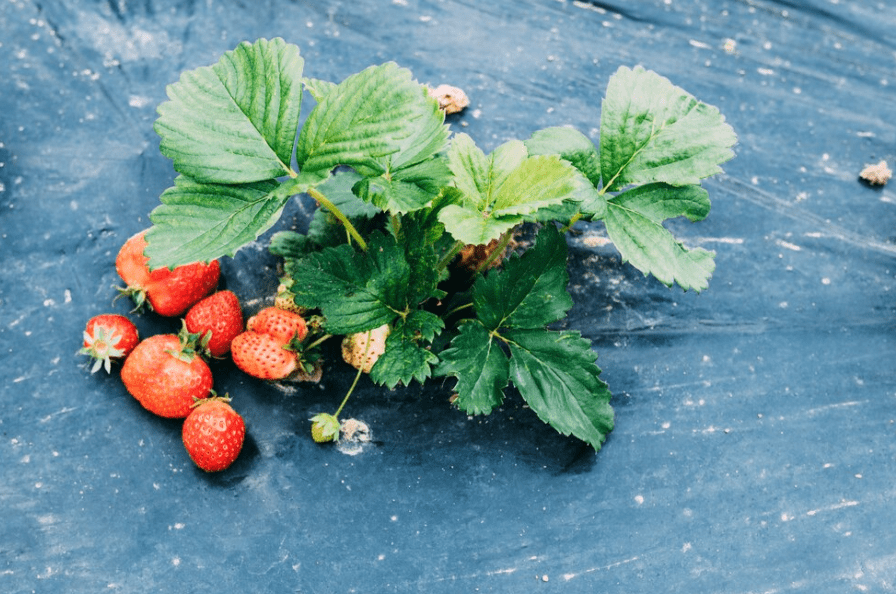
Culinary Uses and Health Benefits
Strawberry leaves can be used in a variety of culinary applications, including brewing as a tea, adding to salads, or using as a flavoring in desserts. The leaves have a slightly sweet and earthy flavor, making them a versatile ingredient in cooking.
In terms of health benefits, consuming strawberry leaves can help improve digestion, reduce inflammation, and support overall immune health. The antioxidants and polyphenols in the leaves can also help protect against heart disease and certain types of cancer.
Safety Considerations
While strawberry leaves provide many health benefits, it’s important to use caution when consuming them. Some people may be allergic to certain compounds in the leaves, so it’s best to start with a small amount and monitor for any adverse reactions.
Comparison with other leafy greens
Strawberry leaves have a unique flavor and offer a variety of health benefits when compared to other leafy greens. In terms of culinary uses, strawberry leaves can be used in a similar way to other leafy greens, such as spinach or kale. However, the slightly sweet and earthy flavor of strawberry leaves sets them apart and can add a unique taste to dishes. In addition, the antioxidants and polyphenols found in strawberry leaves provide a range of health benefits, such as improving digestion, reducing inflammation, and supporting immune health. When compared to other leafy greens, strawberry leaves contain compounds that can help protect the body from oxidative stress and reduce the risk of chronic diseases. It’s important to note that while consuming strawberry leaves can be beneficial, some individuals may be allergic to certain compounds in the leaves, so it’s important to use caution and start with small amounts. Overall, incorporating strawberry leaves into your diet can provide a flavorful and nutritious addition to your meals.
Antioxidant properties
Are one of the key health benefits of consuming strawberry leaves. These leaves contain powerful antioxidants and polyphenols, which can help to combat oxidative stress in the body. Oxidative stress occurs when there is an imbalance of free radicals and antioxidants in the body, leading to damage to cells and tissues. By consuming foods rich in antioxidants, such as strawberry leaves, you can help to reduce the risk of chronic diseases and support overall health. These antioxidants also have anti-inflammatory properties, which can help to reduce inflammation in the body and support immune health. When compared to other leafy greens, strawberry leaves stand out for their unique combination of antioxidant and anti-inflammatory compounds, making them a valuable addition to a healthy diet. It’s important to note that while strawberry leaves can offer health benefits, it’s important to consume them in moderation and be mindful of any potential allergies or sensitivities. Overall, incorporating strawberry leaves into your diet can provide a tasty and nutritious way to support your health.
Health Benefits of Strawberry Leaves
Anti-inflammatory properties
Strawberry leaves contain powerful antioxidants and polyphenols, which can help to combat oxidative stress in the body. Oxidative stress occurs when there is an imbalance of free radicals and antioxidants in the body, leading to damage to cells and tissues. By consuming foods rich in antioxidants, such as strawberry leaves, you can help to reduce the risk of chronic diseases and support overall health. These antioxidants also have anti-inflammatory properties, which can help to reduce inflammation in the body and support immune health. When compared to other leafy greens, strawberry leaves stand out for their unique combination of antioxidant and anti-inflammatory compounds, making them a valuable addition to a healthy diet. It’s important to note that while strawberry leaves can offer health benefits, it’s important to consume them in moderation and be mindful of any potential allergies or sensitivities. Overall, incorporating strawberry leaves into your diet can provide a tasty and nutritious way to support your health.
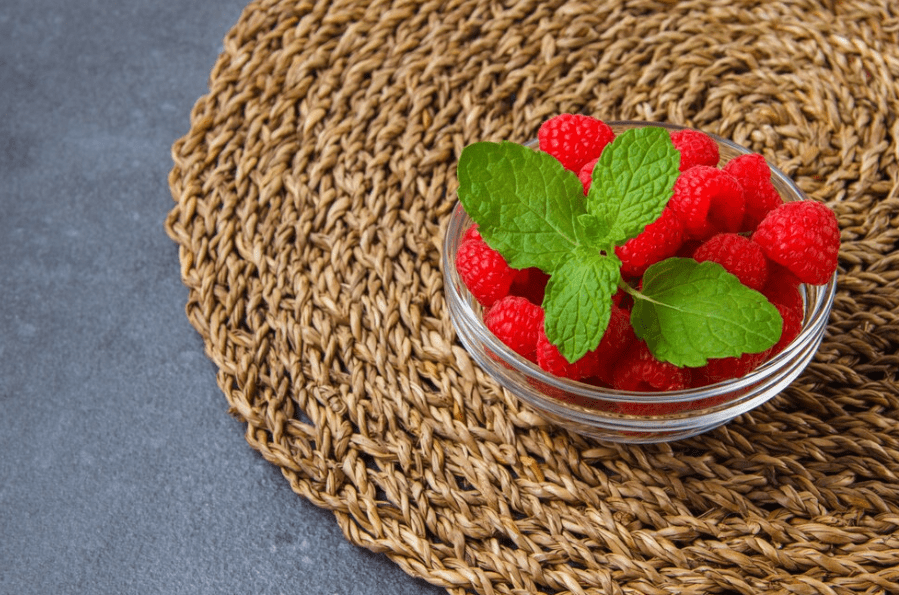
Digestive health benefits
One of the health benefits of consuming strawberry leaves is their potential to support digestive health. The leaves contain tannins, which have astringent properties that can help to tone and tighten the tissues in the digestive tract. This can be beneficial for individuals experiencing issues such as diarrhea or gastroenteritis. Additionally, the fiber content in strawberry leaves can aid in promoting regular bowel movements and supporting overall digestive function. The leaves can be consumed in the form of herbal tea or added to salads and smoothies to harness their digestive health benefits. As with any dietary change, it’s important to consult with a healthcare professional to ensure that incorporating strawberry leaves into your diet is safe for your individual health needs.
Role in managing arthritis and joint pain
Strawberry leaves can also play a role in managing arthritis and joint pain. The leaves have anti-inflammatory properties that can help alleviate pain and reduce inflammation in the joints. Drinking strawberry leaf tea or incorporating the leaves into your diet can help support joint health and manage the symptoms of arthritis. Additionally, the high antioxidant content in strawberry leaves can help protect the joints from oxidative stress and damage. It’s important to consult with a healthcare professional before using strawberry leaves as a natural remedy for arthritis and joint pain to ensure that it is safe and appropriate for your individual health needs.
Potential cancer-fighting properties
Strawberry leaves are believed to have potential cancer-fighting properties. The leaves contain antioxidants and other compounds that have been studied for their ability to inhibit the growth of cancer cells. Consuming strawberry leaf tea or incorporating the leaves into your diet may help support overall health and potentially reduce the risk of certain types of cancer. However, it’s important to note that more research is needed to fully understand the cancer-fighting properties of strawberry leaves. It’s always best to consult with a healthcare professional before making any dietary changes or using natural remedies for cancer prevention.
Culinary Uses of Strawberry Leaves
Fresh leaves in salads
Strawberry leaves can also be used in culinary dishes. The fresh leaves can be added to salads to give them a unique and slightly sweet flavor. They can also be used as a garnish for desserts or as a flavoring for beverages. However, it’s important to ensure that the leaves are free from pesticides and other contaminants before consuming them. Be sure to wash them thoroughly before adding them to your food. Additionally, you can dry the leaves and use them to make herbal teas or infusions for a refreshing and nutritious drink. Just make sure to use caution and consult with a healthcare professional if you have any concerns or health conditions before incorporating strawberry leaves into your diet.
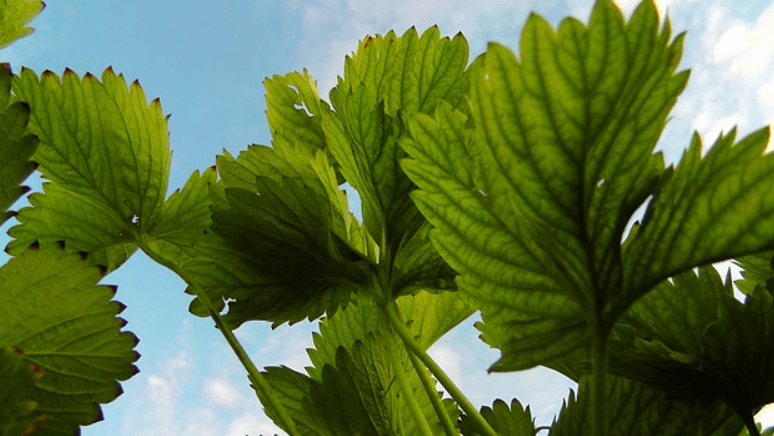
Infusing strawberry leaves in teas
Is a great way to enjoy the health benefits of these leaves. Strawberry leaves have been used for centuries in traditional medicine and herbal remedies due to their high content of antioxidants, vitamins, and minerals. To infuse strawberry leaves in tea, simply add a handful of dried leaves to a pot of boiling water and allow it to steep for 5-10 minutes. You can also mix the dried leaves with other herbs such as mint or chamomile for added flavor. Once the tea is ready, strain out the leaves and enjoy a soothing and flavorful beverage. Strawberry leaf tea can be enjoyed hot or cold, making it a versatile and refreshing option for any time of day. Just be sure to use caution if you have any allergies or sensitivities to strawberry leaves, and consult with a healthcare professional before incorporating them into your diet.
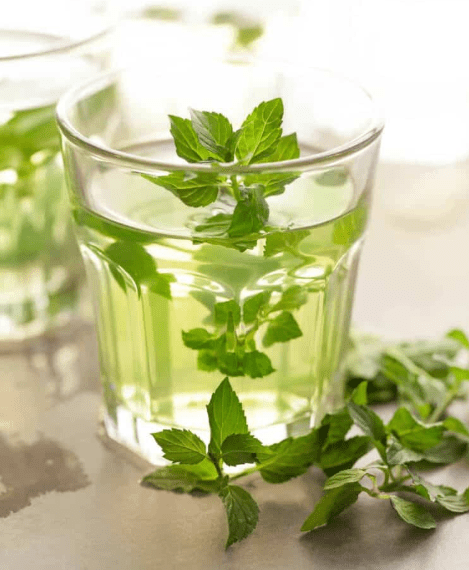
Adding to smoothies for extra nutrients
Adding strawberry leaves to your smoothies is a great way to boost the nutritional content of your drink. Strawberry leaves are packed with antioxidants, vitamins, and minerals that can help support your overall health and wellness. To incorporate them into your smoothies, simply wash the leaves thoroughly and blend them with your favorite fruits and vegetables. You can also add them to yogurt or protein shakes for an extra nutrient boost. The natural sweetness of the leaves can add a pleasant flavor to your smoothie as well. Whether you use fresh or dried leaves, adding strawberry leaves to your smoothies is an easy and delicious way to enhance your daily intake of nutrients.
Using dried leaves as seasoning
Is a great way to add a unique and flavorful twist to your dishes. Strawberry leaves can be dried and then crushed into a fine powder to be used as a seasoning. This can add a subtle fruity and earthy flavor to your dishes. You can sprinkle it on salads, pasta, or even use it as a seasoning for meat or fish. Just be sure to use caution if you have any allergies or sensitivities to strawberry leaves, and consult with a healthcare professional before incorporating them into your diet. Using dried strawberry leaves as seasoning is a creative and healthy way to enhance the flavor of your meals and add extra nutrients to your diet.
Medicinal Uses of Strawberry Leaves
Historical use in traditional medicine
Strawberry leaves have been used in traditional medicine for centuries. They are believed to have various health benefits, including being a diuretic and helping to alleviate diarrhea. The leaves are also said to have anti-inflammatory and anti-oxidant properties, making them a potentially valuable addition to natural remedies. In traditional medicine, strawberry leaves have been used to treat a variety of ailments, including stomach issues, joint pain, and skin conditions. While more research is needed to fully understand the potential medicinal benefits of strawberry leaves, their historical use in traditional medicine suggests that they may have valuable health properties. As with any natural remedy, it’s important to consult with a healthcare professional before using strawberry leaves for medicinal purposes.
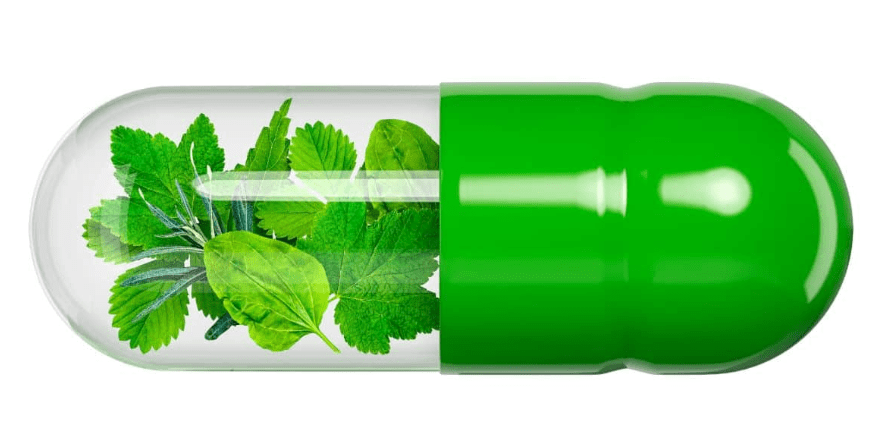
Modern herbal remedies
Are becoming increasingly popular as people seek natural and holistic alternatives to traditional medicine. Dried strawberry leaves are being used as seasoning to enhance the flavor of meals and add extra nutrients to the diet. In addition to being used as a seasoning, strawberry leaves have been used in traditional medicine for centuries. They are believed to have various health benefits, including being a diuretic and helping to alleviate diarrhea. The leaves are also said to have anti-inflammatory and anti-oxidant properties, making them a potentially valuable addition to natural remedies. In modern herbal remedies, strawberry leaves are being studied for their potential health benefits and are being incorporated into various supplements and natural health products. It’s important to consult with a healthcare professional before using strawberry leaves for medicinal purposes, but they can be a valuable addition to a natural and holistic approach to health and wellness.
Recipes for medicinal teas and infusions
Are becoming increasingly popular as people seek natural and holistic alternatives to traditional medicine. Dried strawberry leaves can be used to create a delicious and healthful tea or infusion. To make a medicinal tea, simply steep a handful of dried strawberry leaves in boiling water for about 10 minutes, then strain and enjoy. This tea is believed to have diuretic properties and may help to alleviate diarrhea. For an infusion, you can steep the leaves in hot water for a longer period of time, usually around 4-6 hours, to extract more of the plant’s beneficial properties. Strawberry leaf infusions are rich in antioxidants and can be a great addition to a natural health regimen. When making medicinal teas and infusions, it’s important to use high-quality, organic ingredients and to consult with a healthcare professional before using them for specific health concerns. With the right knowledge and guidance, incorporating medicinal teas and infusions into your wellness routine can be a wonderful way to support your health in a natural and holistic way.
Safety and Precautions
Potential allergies or adverse reactions
When using dried strawberry leaves to make tea or infusions, it’s important to be aware of potential allergies or adverse reactions. Some individuals may have a sensitivity to strawberry leaves, so it’s important to start with a small amount and monitor for any negative reactions. If you have known allergies to strawberries or other plants in the Rosaceae family, it’s best to avoid using strawberry leaves altogether. Always consult with a healthcare professional before using any herbal remedies, especially if you have specific health concerns or are taking medications. It’s important to approach herbal teas and infusions with caution and to prioritize safety when using natural remedies for health purposes.
Proper identification of strawberry leaves
Is crucial when using them for medicinal teas and infusions. It’s important to ensure that you are using the correct type of leaves, as there are different varieties of the plant. The leaves of the strawberry plant are typically toothed and have a characteristic shape, with three leaflets attached to a central stem. It’s important to correctly identify the leaves before using them in teas or infusions to avoid any potential toxicity or adverse effects. If you are unsure about the identification of strawberry leaves, it’s best to consult with a knowledgeable herbalist or botanist to ensure that you are using the correct plant material. Additionally, always use organic and high-quality leaves to minimize the risk of contamination with pesticides or other harmful substances. Proper identification and sourcing of strawberry leaves are essential for the safe and effective use of these botanicals in medicinal preparations.
Safe consumption guidelines
Are essential when using herbal remedies and natural remedies. It’s important to properly identify the plant material you are using, especially when it comes to medicinal teas and infusions. When using strawberry leaves for herbal preparations, it’s crucial to ensure that you are using the correct type of leaves, as there are different varieties of the plant. The leaves of the strawberry plant are typically toothed and have a characteristic shape, with three leaflets attached to a central stem. Proper identification of the leaves is important to avoid any potential toxicity or adverse effects. If you are unsure about the identification of strawberry leaves, it’s best to consult with a knowledgeable herbalist or botanist to ensure that you are using the correct plant material. Additionally, always use organic and high-quality leaves to minimize the risk of contamination with pesticides or other harmful substances. Following safe consumption guidelines and using the correct plant material is essential for the safe and effective use of herbal remedies.
How to Harvest and Store Strawberry Leaves
Best time to harvest for maximum nutrients
The best time to harvest strawberry leaves for maximum nutrients is in the morning when the dew has dried. This is when the leaves have the highest concentration of phytochemicals and nutrients. When harvesting, be sure to select leaves that are vibrant, green, and free from any signs of disease or damage. It’s best to harvest the leaves before the plant has started to flower, as this is when the nutrient content is at its peak. After harvesting, it’s important to dry the leaves thoroughly to prevent mold and preserve their potency. You can do this by laying the leaves out in a single layer on a clean, dry surface and allowing them to air dry for several days. Once the leaves are completely dry, store them in an airtight container in a cool, dark place to maintain their freshness and potency. By harvesting and storing strawberry leaves properly, you can ensure that you are getting the maximum nutritional benefits from them.

Methods of drying and storing
strawberry leaves are important to ensure that you are preserving the nutrients and phytochemicals they contain. When harvesting, it’s best to select leaves that are vibrant, green, and free from any signs of disease or damage. It’s also ideal to harvest the leaves before the plant has started to flower, as this is when the nutrient content is at its peak. After harvesting, it’s important to dry the leaves thoroughly to prevent mold and preserve their potency. You can do this by laying the leaves out in a single layer on a clean, dry surface and allowing them to air dry for several days. Once the leaves are completely dry, store them in an airtight container in a cool, dark place to maintain their freshness and potency. By following these methods of drying and storing, you can ensure that you are getting the maximum nutritional benefits from strawberry leaves.
Environmental Benefits of Utilizing Strawberry Leaves
Strawberry leaves have many environmental benefits when utilized properly. One of the main benefits is that they can be used as a natural fertilizer for plants. By composting the dried leaves and adding them to the soil, you can improve soil health and promote healthy plant growth. Additionally, using strawberry leaves in composting helps to reduce waste and decrease the need for chemical fertilizers, which can have harmful effects on the environment. Another environmental benefit of utilizing strawberry leaves is their potential use in natural pest control. Some studies have shown that extracts from strawberry leaves have insecticidal properties, which can help to reduce the need for synthetic pesticides that can harm beneficial insects and the environment. By finding sustainable and eco-friendly ways to utilize strawberry leaves, we can help to reduce waste and promote a healthier environment.
In conclusion, while some people may argue that strawberry leaves are not edible, the truth is that they are indeed edible and have a range of health benefits. From being high in antioxidants to aiding in digestion, strawberry leaves can be a valuable addition to your diet. When using them in culinary creations, it’s important to ensure that they are properly washed and prepared to avoid any potential issues. So, next time you’re enjoying a delicious strawberry dish, consider incorporating the leaves for an added nutritional boost.
Frequently asked questions And Answer
Yes, strawberry leaves are edible and can be used in culinary dishes and teas.
Strawberry leaves contain antioxidants and can help with digestion and inflammation. They are also high in vitamin C and can support overall immune health.
You can use strawberry leaves to infuse flavor into desserts, salads, and beverages. They can also be used to make herbal teas.
While strawberry leaves are edible, it is best to consume them cooked or in tea form to avoid any potential digestive discomfort.
It’s important to ensure that the leaves are clean and free from pesticides or other contaminants before consuming them. Additionally, individuals with allergies to plants in the Rosaceae family (such as strawberries) should use caution when consuming strawberry leaves.
